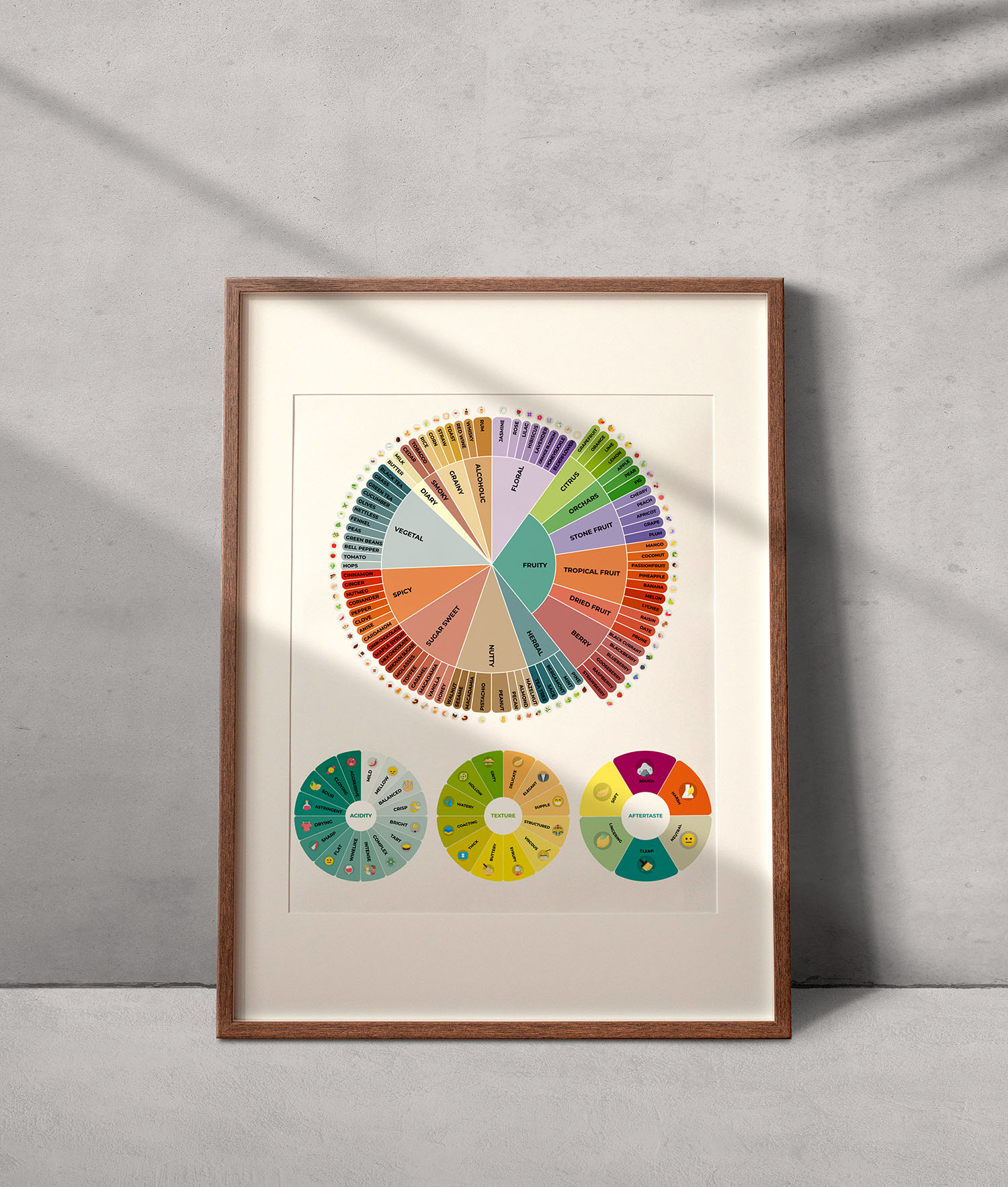Engage with your morning coffee in a completely new way, taste coffee like never before, and learn more about the taste, acidity, texture, and aftertaste of coffee.

Coffee Flavor Wheel
What should you know about tasking coffee? (Coffee Flavor Wheels)
Each bag of coffee has a section that says three flavors after the “tasting note”, usually one or two fruits and something sweet like toffee or caramel. If you’ve ever spent time shopping for coffee at your favorite local coffee shop or online, it’s almost certain that you’ve read the bag’s flavor notes when trying to make a decision. Descriptions like “caramel and plum with a long finish”, or “blackberry and cocoa, orange flower aromatics” are printed like some secret taste code that is cracked only by those who know.
Although, sometimes, there is an adjective like a floral note or sparkle. You may be wondering, “Does it really taste that way?” The answer is surprising, yes. Coffee is full of chemical compounds that result in a world of taste and aroma that anyone can feel with a little practice and attention.
How to taste coffee?
Many variations affect the aroma of coffee: where the coffee grows, what type of coffee grows, how the coffee grows, how the fruit is removed from the beans, how the coffee is mixed and roasted, and how the coffee is made. And those are just some of the reasons.
So, when you are tasting your coffee, what should you look for? Focus on and describe these five qualities: Sweetness, Flavor, Acidity, Texture (body), and aftertaste. As you will discover, these properties form the complete taste “profile” of a coffee.
- Sweetness
Do you understand certain types of sweet tastes, such as brown sugar, molasses, honey, or caramel? Sweetness may or may not sound like the tip of your tongue when you think of your favorite bean bag, and acknowledge that the sweetness in coffee doesn’t always come the way people often think of sweet and sugary desserts. Ask yourself with every coffee you drink what kind of sweet you find.
When you drink, pay attention to the difference between honey and maple syrup or white and brown sugar. You can save these sensitive memories and recall them while drinking coffee. You can drink two coffees side by side and compare. The sweetness of an East African single source can be like light honey, while a Colombian coffee may remind you of butterscotch.
- Flavor
The flavor is quite simple on its own, but the importance of coffee is not second to none. Taste and smell (scent) combine in the brain to create the taste you feel, which means the aroma of your drink will begin to tell your palate what to expect before you get a chance to take a sip! Coffee can smell like fruit, floral, delicious, roast, and loads more. Don’t underestimate the value of your nose the next time you dive into a mug of good stuff.
- Acidity
Is the acidity high and very noticeable, or is there a barely noticeable acidity from low acidity? Is it like the acidity found in oranges (citric acid), apples and stone fruits (malic acid), and grapes (tartaric acid)? These are just a few of the many different acids out there, but most often found in coffee. It is worth remembering that acidity is not a bad thing and in many cases helps to provide unfavorable taste and a good cup of coffee will have a kind of positive acidity.
- Texture (body)
The body and texture will vary depending on the type of coffee bean you are using, the brew method you choose, and the filters used in that brewery. There won’t necessarily be a good or bad narrator, but a body and texture that matches the rest of the drink’s characteristics can make or break a cup of coffee.
- Aftertaste
After a sip, does the coffee leave a lasting finish on your tongue or does it suddenly come to a sharp finish? When evaluating a coffee, think of the above and you will have a good map of things to look for. Also, combining these is a good formula to describe coffee.
Conclusion
Your coffee skills are something you can work on over time. It’s a fun way to get more out of your daily drinking experience.
You may want to try espressos or filter coffees to eliminate sugar and milk and get a completely unchanged taste. When tasting, remember the flavor and smell, acidity, sweetness, bitterness, body and mouth taste, and aftertaste.

Coffee Flavor Wheel
Engage with your morning coffee in a completely new way, taste coffee like never before, and learn more about the flavor, acidity, texture, and aftertaste of coffee.


